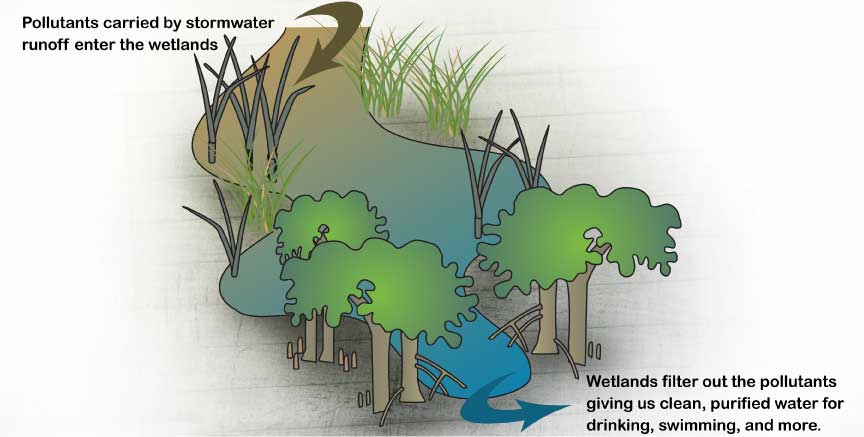Wetlands purify our water by removing sediments and other pollutants including chemicals. Wetlands also filter and process excess nutrients that may runoff from agricultural and development sites. Wetlands have been called “the kidneys of our watersheds.”
In heavily developed areas, stormwater travels over buildings, streets, sidewalks, parking lots and other impermeable surfaces collecting sediments, excess nutrients and toxic chemicals. In less developed areas, excess nutrients can be washed away from agricultural fields and contribute pollutants to the stormwater runoff. This stormwater eventually enters nearby wetlands where it is absorbed.
Wetlands hold on to this water long enough to allow the sediments and other pollutants to settle out and the purified water then enters drinking water sources such as groundwater and rivers. This cleansed water also contributes to our bays and ocean.
A recent review by the EPA found that the wastewater treatment facilities in the United States need updating: estimates of the cost of updating these facilities to meet the increased demand for purified water between 2007 and 2026 range from $298.1 billion and $334.8 billion.
These costs could be potentially lessened through the restoration and conservation of surrounding watersheds.
For instance, to remove the nitrogen in waters coming to the Chesapeake Bay, building or upgrading wastewater treatment facilities is projected to cost $8.56/lb of Nitrogen, whereas conserving and restoring forested wetland buffers is projected to cost $3.10/lb of Nitrogen.
Both methods would remove the same quantity of nitrogen, but the forested buffer costs less than half that of a new or upgraded wastewater treatment facility.
